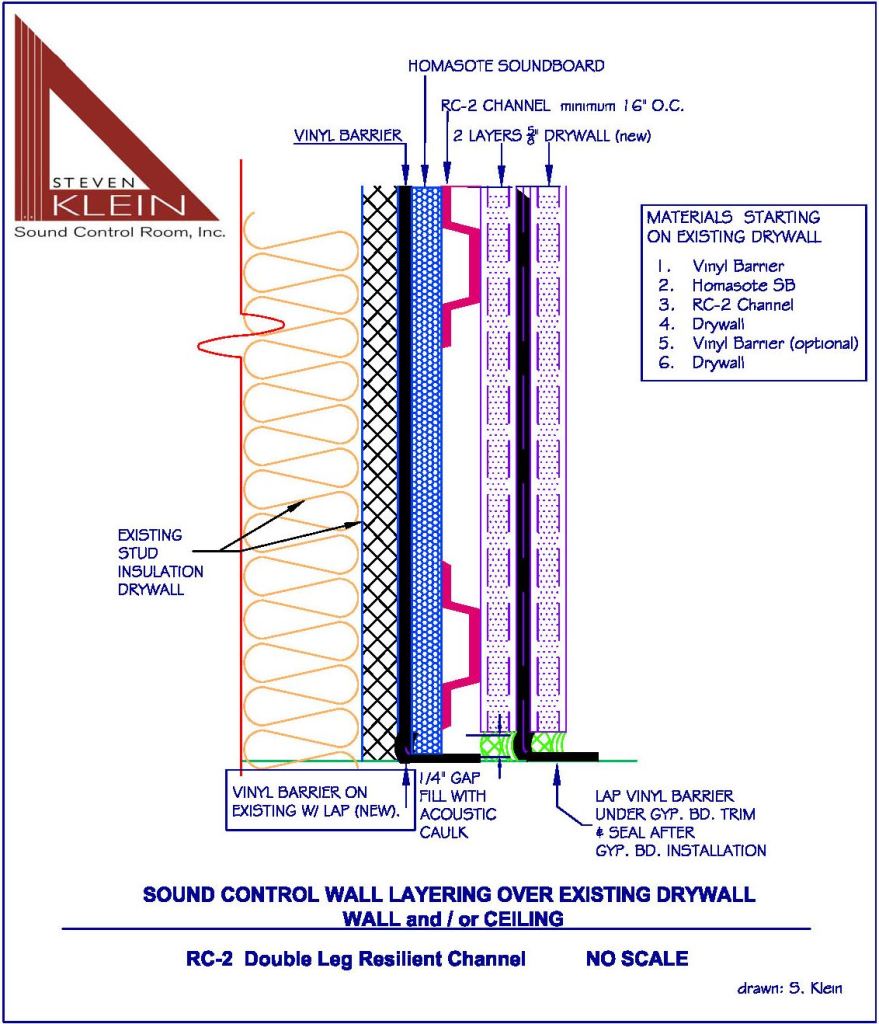Sound Control Wall Layering Over Existing Drywall
NOTE: This is using RC-2 Double Leg Resilient Channel.
This is a detail for sound resistant wall construction that we commonly use and have had great results with. It is a bit unconventional as it has never been laboratory tested and the use of resilient channel over layering is not often seen. Nonetheless, it has proven to be a pragmatic application that has sound proofing characteristics in a limited amount of space and costs. There are ways to increase the efficiency of this design by using better grades of soundboard and methods of layering the other side of the stud. Contact us if you need help.
Notice of soundboard compatibility: Recently there have been materials sold as soundboard that will not withstand the compression inherit in this design. Celotex or Homasote brands will work fine. The soundboard should be dense and not easily broken. If it is easily broken, it is not to be used in this design.
SPECIFICATIONS FOR WALL LAYERING
Strict adherence to these specifications will obtain the maximum sound resistant construction. It is necessary to insure the rooms are completely airtight. They must be followed and executed EXACTLY, no exception.
- Existing stud or joist cavity requires maximum allowable insulation rating.
- Use appropriate size drywall screws so that screws in channel do not touch studs.
- Start at ceiling. Complete each layer before starting the next layer.
- Hold drywall 1/4″ from floor. If applied to vinyl barrier, 2 inches of vinyl should overlap perimeter or lay on floor. Caulk perimeter of all drywall layers with acoustic caulk.
- Firetape all drywall layers.
- Drywall layers can be vertical and/or horizontal. Avoid alignment of seams.
- Seal electrical boxes with sound pad. Use caulk and/or expanding foam around any penetrations (i.e., outlets, air conditioning) on each layer of drywall.
- All low voltage wiring will terminate in an electrical box wrapped with sound pad, no open plates.
- In new construction, apply a continuous 1” bead of caulking or construction adhesive to floor plates (wood or metal at bottom of wall). This will insure air seal between the floor and wall.
Clink Related Links below for installation and product information.
- Mass Loaded Vinyl
- Acoustic Caulk
- Advice for Minimum Wall Layering
- Sound Control Wall Layering Over Existing Drywall Using RSIC-1 Clips




